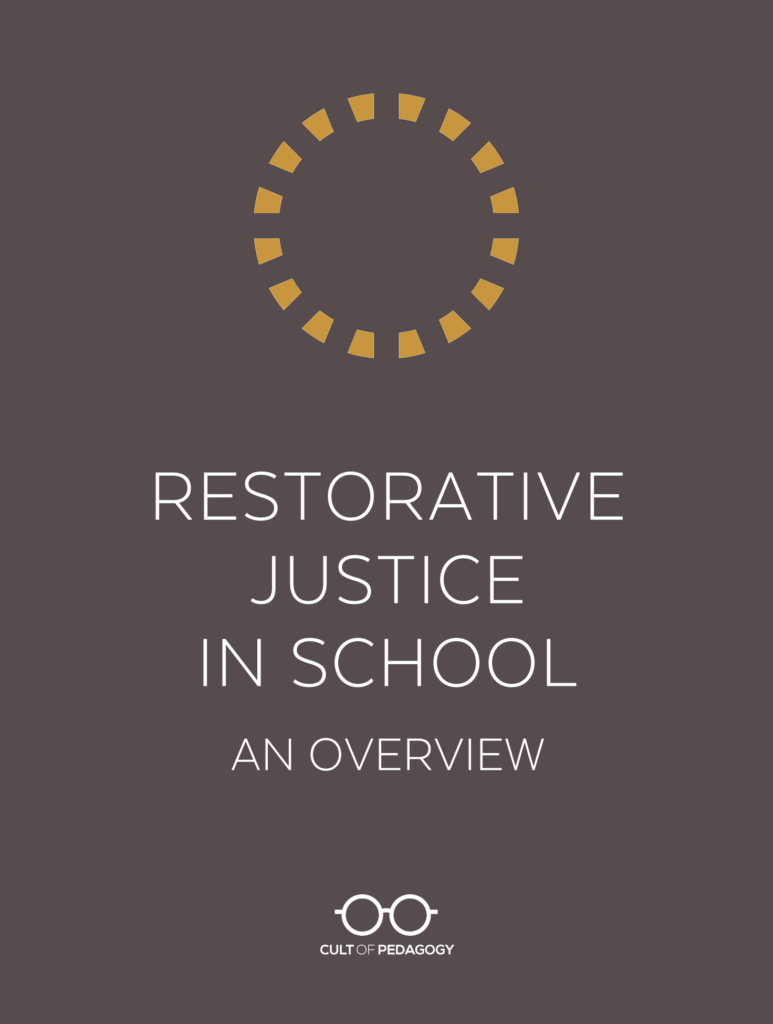
Listen to my interview with Victor Small (transcript):
Sponsored by Pear Deck and Peergrade
This post contains Amazon Affiliate links. When you make a purchase through these links, Cult of Pedagogy gets a small percentage of the sale at no extra cost to you.
A student threw a chair at a teacher.
That’s the story I heard. It was a story meant to illustrate how bad a particular group of kids was, and now I can’t even remember who the teacher was or where the school was located, or even the gender of the teacher or the student. In fact, I’m pretty sure I’ve heard two or three different stories about students throwing things at teachers, each one told with the intent of showing just how bad those kids were.
But every time I’ve heard a story like that, my first thought has always been, Holy crap. What kind of a relationship did that teacher have with those students? What was going on in the minutes, days, and weeks leading up to that chair being thrown?
And I know how that sounds. It sounds like I’m blaming the teacher. Or that I don’t think a student should be held responsible for doing something as awful as throwing a piece of furniture at another human being.
I don’t think that. But here’s what I think probably happened in all of those schools: The student was removed from class and promptly suspended, maybe even expelled. And if and when that student returned to school, nothing much was done to repair that student’s relationship with the teacher. Or to really address the other issues that may have been going on leading up to that chair being thrown. And if that kind of work isn’t done, if we focus only on making our punishments stricter, then things like chair throwing will keep happening. And nobody wants that.
Getting students to behave in a way that is conducive to learning is a perennial challenge for teachers. On this site I have dealt with the topic a number of times. And every piece of advice—the tips and hacks and bits of wisdom—they are all useful.
But one approach to addressing problematic behavior—restorative justice—really stands on its own, because it focuses on building relationships and repairing harm, rather than simply punishing students for misbehavior.
I have wanted to share more about restorative justice on my site for years, but every time I started, I found that the topic was just too big, too complex to handle all at once. Usually, I try to share things that teachers can understand and apply right away, and the concept of restorative justice just wasn’t letting me package and deliver it in a tidy little bundle.
So rather than try to do that, I’m going to just start with an overview. This will not be a comprehensive study of restorative practices, but an introduction designed for teachers who are just starting to get interested in this approach.

Victor Small, Jr.
Helping me do that is Victor Small, Jr., a middle school administrator in Oakland, California. He has been using restorative practices for several years and supports other teachers through a Twitter chat—using the hashtag #RJLeagueChat—and a Voxer group called the Restorative Justice League, where educators talk about the challenges they’re facing in implementing restorative practices and help each other work through tough situations.
In our interview, Small walks me through some of the basics of restorative justice—called RJ by many of its practitioners—and talks about how teachers can get started. You can listen to the interview in the player above, read a full transcript, or review the key takeaways here.
What is Restorative Justice?
The philosophy of restorative justice has its roots in the criminal justice system. When a crime is committed in a modern society, the typical response is to punish the offender, and that’s about it. But societies all over the world have started to recognize that this approach doesn’t repair the harm that was done; it also does nothing to address underlying problems that may have led to the offense in the first place. So they are starting to replace—or at least supplement—the standard approach with restorative justice practices, which focus on repairing harm for all parties involved. This process may include some form of punishment for the offender, but the lens is much wider than that.
“Say you stole a car,” Small says. “Instead of you necessarily doing jail time, really what you would have to first do is make sure that you restore the situation to the person who you actually harmed, which would be the person whose car you stole, right? So you would have to restore that in some way. Either you’d have to get them their car back or get them a new car and apologize or something like that. Basically, the debt that you owe to society is to that person that you harmed.”
This shift toward restorative justice has led to reduced recidivism (repeat offenses), greater satisfaction with the outcomes from all stakeholders, and reduced post-traumatic stress caused by the crime. (These results are summarized in this overview from the University of Wisconsin.)
Encouraged by these successes, educators in some schools have started using restorative practices to address disruptive or harmful behavior. With this shift, schools hope to see improved behavior and to reverse a disturbing trend: The zero-tolerance discipline policies of the past few decades have dramatically increased suspension rates in many districts, which can in turn lower graduation rates and ultimately push more students into the juvenile justice system. And again, those suspensions do nothing to repair harm.
Common Restorative Practices
The thing about restorative justice is that unlike a typical discipline program, it is not a cut-and-dried system with prescribed steps to follow in every situation. If done correctly, schools that shift to restorative justice will approach it holistically, looking at preventing wrongdoing as much as—if not more than—how to address it when it occurs.
“What we’re essentially teaching students is your behavior affects people,” Small explains, “and so in order to pay it forward or to deal with the consequences of that, you’re going to have to figure out how to make things right. When we talk about restorative justice practices, we’re talking about the things you’re doing to ensure that students are recognizing when they’re doing something wrong and finding a way to make it right.”
Although restorative justice models vary somewhat from school to school, Small says schools that are doing it right have the following practices at their core.
Building Relationships
Schools that get interested in restorative justice may be tempted to jump right to the alternative punishments, but a true RJ program puts heavy emphasis on relationships. These relationships go in all directions: teacher to student, student to student, teacher to teacher, and between the school and the larger community.
These bonds are not forged overnight. Daily conversations, team-building exercises, telling our own stories and making time and space for students to tell theirs helps build relationships over time. “You’ve got to give them time to grow with one another,” Small says.
And if you do, it pays off. “If you’ve got everybody in the school liking and getting along with one another, well when they do something wrong, it’s a lot easier for that kid to apologize. The reason I’m really a very big proponent of RJ is if you’re doing it right, you’re going to prevent a whole lot of issues from occurring.”
A Mindset Shift
To be effective with restorative justice, teachers need to adopt a restorative mindset, a way of looking at wrongdoing and punishment through a different lens.
“Everything that a kid does shouldn’t have to have a consequence,” Small says. “I mean if a kid gets angry and says something to another kid, and that kid gets mad, do they need detention for that, or do they need to just fix the problem and not be mad at each other? Probably just fix the problem, not be mad at each other, and go on about their lives. If they didn’t do anything wrong to the class or the community and they just did something messed-up to another student, they can handle that between the two students. You could facilitate that. It teaches them, hey, you have to be accountable for your actions, because your actions do have impact on other students, without having them sit in detention, right?”
Circles
Pulling groups of people together into circles for conversation is one of the most recognizable features of schools that have adopted restorative practices. These circles can take many forms: mediation circles when a problem needs to be addressed, healing circles when group members are hurting or grieving, or circles that form just for dialogue and storytelling. When circles are a regular part of the school culture, they give students a vehicle for communicating when problems arise, rather than handling them in less constructive ways.
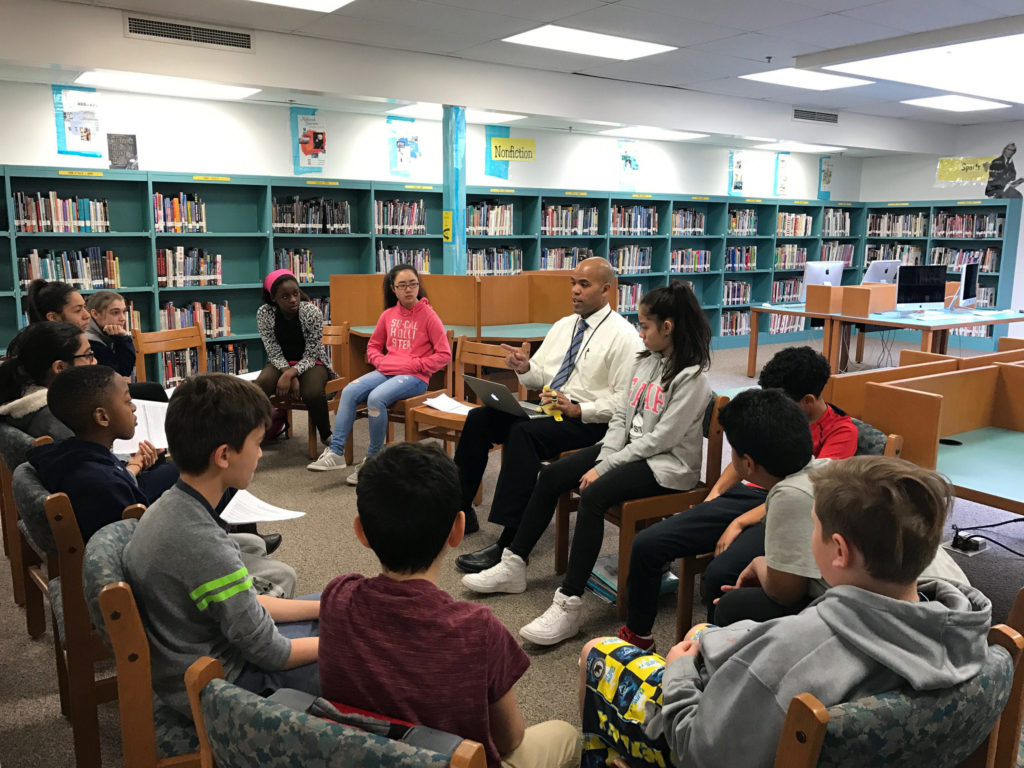
Teacher Hakim Jones leads a circle at Murray Hill Middle School in North Laurel, Maryland (photo by Gwyneth Jones, CC BY-NC-SA 2.0)
Where to Start
Small offers this advice for educators who want to get started with restorative justice:
Read about RJ
A lot of excellent books have been written about restorative practices. To make sure you and your colleagues are working from a solid foundation, read up on the history and philosophy before attempting to implement an RJ program. I have listed a few good starter books at the end of this post, and a lot more can be found online that detail specific practices.
Identify Your Biases and Triggers
A big part of addressing student misbehavior and building strong relationships with students is uncovering our own built-in biases. And the first step toward doing that is getting comfortable with the idea that we all have them.
“It’s really painful for us to consider this,” Small says, “but if we walk into our classrooms and we really try to believe that an approach to colorblindness is one that’s effective, we’re really shortchanging our kids’ lives, because if we’re just constantly telling them, ‘Hey, I don’t see color,’ when they leave your classroom, someone’s going to see their color. And someone’s going to act possibly on the fact that they see their color, so we’re setting them up for failure if we don’t do our own investigation of, ‘Do I have any biases against any particular type of culture, any particular type of culture activity, any of my students? Do I have any things that trigger certain behavior or fears or anger that they do that they do naturally? Taking a step back and wondering, is it me or is it them?'”
Build Culture and Community
If you have a school culture where students feel known, where they feel at home, behavior on the whole will be better and efforts to address wrongdoing will be more productive. Getting to that point will happen if you approach culture-building from a lot of different angles.
“Work on finding ways to include kids in what’s going on,” Small says, “like allowing more student voice, allowing more student opportunities for them to display their culture, act on their culture, be a part of their culture.”
Having caring adults in the building who look like the student body is also more important than many people realize. “You need to give (students) opportunities to learn about people that look like them, that are from their culture, that represent them. If 99 percent of your staff is white and 99 percent of your student body is black and Latino, you’re going to need to figure out a way to get more black and Latino staff members in your school.” (This conversation with former teacher of the year Nate Bowling dives more deeply into this topic.)
Finally, schools can work to make the school more integrated into the larger community. “If you can find ways to learn about the neighborhoods, the communities and find ways to bring people from the community and in the neighborhoods into your school, you’re creating a school culture that the students can feel more at home in.” And when students feel at home, when they know each other, there’s less of a need to address misbehavior.
“They just get along better, so they fight less,” Small says of his students. “There’s less reason for them to fight, because everyone knows everyone else.”
Okay, but what about the discipline?
Having finished this overview, I realize I never quite got to the question of How does restorative justice actually deal with the misbehavior?
The answer to this is complicated, because it’s not as simple as detention-suspension-expulsion. There are conferences and circles, a lot of discussion about the harm that was done and how it can be repaired. Individual decisions are made on an individual basis. There’s more to it than I can cover in one post, but I plan to do more posts later to dig more deeply into the details. I really do believe that restorative justice is the direction we need to be heading to create safer, healthier school communities.
I hope you’ll take a step in that direction. ♦
To Learn More
These books offer a great starting point for learning more about restorative practices:
Better than Carrots or Sticks:
Restorative Practices for Positive Classroom Management
Dominique Smith, Douglas Fisher, Nancy Frey
The Little Book of Restorative Justice
Howard Zehr
The Little Book of Restorative Discipline for Schools:
Teaching Responsibility; Creating Caring Climates
Lorraine Stutzman Amstutz, Judy H. Mullet
Touching Spirit Bear
(Reader Recommended)
Ben Mikaelsen
You can find Victor Small, Jr., on Twitter at @MrSmall215, and join him every Sunday night at 8pm EST for the #RJLeagueChat.
Join my mailing list and get weekly tips, tools, and inspiration—in quick, bite-sized packages—all geared toward making your teaching more effective and fun. You’ll get access to our members-only library of free downloads, including 20 Ways to Cut Your Grading Time in Half, the e-booklet that has helped thousands of teachers save time on grading. Over 50,000 other teachers have already joined—come on in.

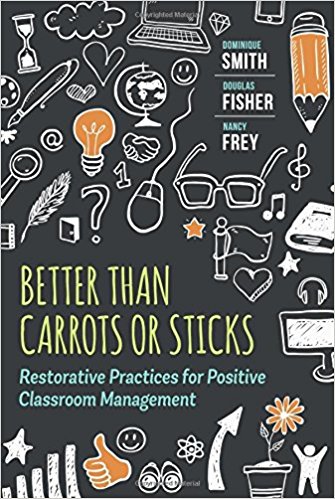
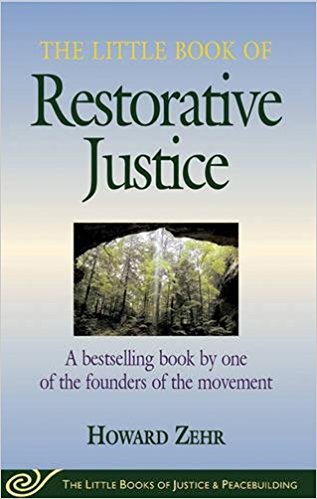
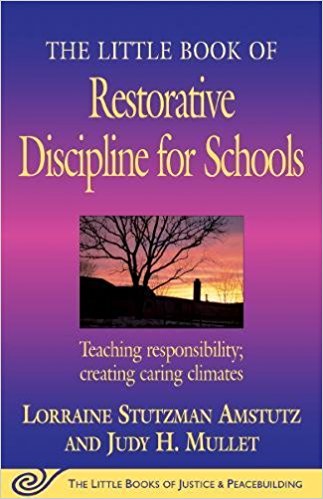
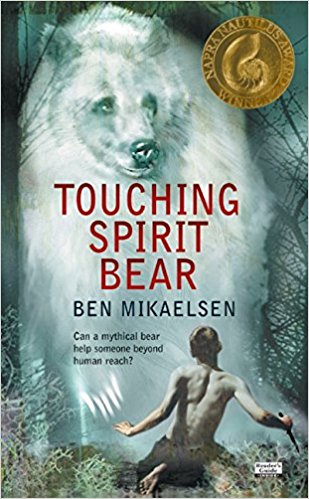


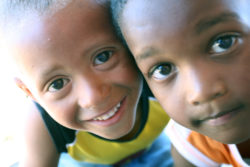

Sounds very much like the underlying philosophy behind Responsive Classroom. Building relationships with students is key in RC
Except that Restorative Practices has roots in indigenous cultures and is a culturally responsive program whereas Responsive Classroom does not incorporate cultural responsiveness, and even has some pieces that are in opposition to culturally responsive best practice.
Actually RC does take cultural responsiveness into consideration, increasingly so in recent years. It has become a definite factor in training.
Responsive Classroom is great! I love the connection building and warm up work being done to get kids ready to learn. The approach, however, is very teacher directed and does not provide students with a pause in “school as usual” to really find their voice and express what matters to them.
If RC is being used in a heavily teacher-directed way, it’s not being used with the greatest fidelity. Also keep in mind that, especially in primary grades, the teacher really does have a role in directing and leading. When done correctly there are plenty of opportunities for students to find their voice.
Can a restorative justice circle backfire?
I’m not sure what it means for the circle to back fire, can you elaborate?
Hi Sophia,
In any possible way, most things can backfire. Would that be reason enough for me to avoid community circle, a restorative practice, in my 4th grade classroom? No. Am I at times hesitant, knowing a student may bring to the circle something controversial? Yes. May bring a misunderstanding to the circle that could spark a flare-up? Yes. It has happened with our principal sitting as a guest in our circle. It has happened with a guest teacher friend, also in the RJ League Voxer group, from North Florida sitting in our circle (we are in Central FL). It has happened with our school SRO and Wal-Mart manager sitting as guests in our circle. Also happened with our assistant principal in our circle. Yet amazingly, the students have cultivated such a community of care and responsiveness, that THEY solved it through attentive listening to what they heard their peers were feeling and what their peers needed. I didn’t solve it. They did. That’s what stood out to all of our guests sitting in on our circles. Students empowered in conflict resolution and community building.
Admittedly though, I will say that there are processes related to reintegration after an absence due to lengthy OSS, possible jail time served, and restoration possibly related to criminal damages where authentic RJ training is necessary in order to honor all parties affected, even and especially the one that caused the harm.
I’m not sure if I was able to help answer your question, but do hope that in some way the idea of backfiring won’t dissuade someone from pushing in and building a community of care.
I love your blog! Thank you so much for sharing. I am currently attending the University of Northern Iowa and studying to become a Social Studies teacher. I find your podcasts to be extremely helpful. I hope to use Restorative Justice in my future classroom!
Thank you for highlighting restorative practices to the CoP audience. Please encourage readers to visit iirp.edu
Thank you!! Will do.
Hi Jennifer,
I enjoy listening to your podcasts. I just really wanted to mention that Restortative Justice is deeply rooted in Indigenous practice. There are many Inidigenous leaders and community members who share their description of the process. I think this is important to include when discussing RJ.
Thank you for sharing with us.
How does restorative justice work when the offense is that of bigotry or misogyny?
With Restorative Conversations and reintigrative shaming… You can talk to the child about what what they did or said was wrong… You can also have a conversation about it in circle…
What is meant by “reintegrative shaming…”? In what ways can we protect the targets and victims of hate speech while also giving teens guilty of these offenses a second chance and an opportunity to reintegrate? Thank you for your replies!
Reintegrative shaming is when you shame the action they committed, in ther presence, while not shaming them as a person… This works fairly often and generally pretty well.
If it doesn’t, deeper work will be needed.
I think that in most classroom, or at least mine and the ones I work with, teachers do restorative justice all the time. It saves everyone the giant nightmare of documentation, filling out forms, getting the office involved, calling parents. No one wants to do those things. Really for most problems, it is easier and wiser to handle them in the classroom.
However, I am getting damn tired of the idea that I don’t have a relationship with the kids in my room. And IF I had a good relationship, the poverty, drugs, home violence, violent video games, gangs would really not match up to that relationship, and everything and everyone in my class would sing Kum by yah and learning would go on.
I have a room of 20 kids. Active, rambunctious, learning, excited, sad, upset, loving kids. The problem with a child blowing up, is the other 19 can’t learn. The teacher is busy with a volcano in the room, not really getting the adverbs attended to. Yes, maybe kids get expelled, but what about the other 19 who now can safely learn? Yes these kids are probably going to have a high percentage of going to jail, but what about the kids in the class that can make it? Who are working their hearts out, who are curious about the world? Who I or another teacher could educate? What about them?
I have tried them all, and when administration wants lower behavior problems, they tell us, just deal with it. If you had better classroom management, this would not be happening. If you cared enough, it would fix itself. When you keep behavioral problems, kids that stab kids with pencils, that spit on teachers and staff, that swear and throw things, that will not follow directions in the room, pretty soon the good kids start asking themselves, why should I behave.
I have a great class this year, loving them and what we are doing. But I have had that child in the past, no matter what you do, what you try, it is never enough. In the beginning, I believed the idea of changing their response, but now I ask what about the other 19 kids. Where are their rights to an education?
As for the kid in Florida, I will bet my bottom dollar that teachers, counselors, administration, policemen, social workers and judges have tried to help that kid. What about the other kids?
Monica
Monica, you sound really frustrated, and I know a lot of other teachers share your frustrations. I always had a great relationship with my students as well, but there were certain class periods, and certain years, where one kid would derail everything, and it drove me crazy thinking how unfair it was to the other students who were just trying to do the right thing. This is something Victor and I talk about on the podcast.
I don’t think there are any easy answers to that problem, but I also don’t think that the point of RJ is to just let that kind of behavior go. In fact, my guess is that if it were done right, it would be addressed with more intensity and depth than in a school where the volcano would just be expelled. I trust that experienced RJ practitioners will come over and share their thoughts as well, so I’ll step aside for them.
Hi Jennifer:
I work with a lot of children in Title 1 schools and I feel that restorative justice circles are much more effective when healing circles are engrained in the culture. I am curious if this program is trauma informed? I have seen a great deal of challenges that arise from teachers who are really practicing restorative justice as a form of discipline without building trust or a safe space, further harming children. My concern is that teachers are being asked to promote restorative justice with kids who are traumatized and receive no restorative justice in their day to day life. I would think their is a great risk for a teacher to be outside their scope practice.
Do you think in Title 1 schools, the school psychologists should be more involved?
(Right now the art teacher)
Should licensed art/music therapists be integrated in trauma 1 schools?
It has been my experience that a great deal of behavior challenges come from children experiencing repeated trauma, witnessing extreme violence, and poverty that shaming of any kind would further harm.
How can we ensure that children are not further traumatized?
Best Regards,
Tamara
Hi Tamara,
You bring up some really important points that I think are definitely worthy of discussion. Being trained in Restorative Justice practices are just a starting point, and that training needs to be high quality and ongoing. I found a couple of articles that speak to the importance of combining trauma-informed practices with RJ. Two Interconnecting Puzzle Pieces: Trauma-Informed Approach and Restorative Justice and What Does Trauma-Informed Mean? Thanks so much for sharing.
Monica, I’m truly sorry that you’re having that situation.
From what I’ve read about the situation in Florida, the suspect was expelled… How does telling someone to leave and not come back actually help the situation?
What have you tried to do in the past in terms of building relationships with that 1 of 20 that gave you problems?
Do you know for sure what the situation was that prompted their behavior? Did you reach out to home? Did you need to call CPS? Were they experiencing trauma or anxiety? Or anything else clinically proven to impare human learning and understanding?
Do you know why the child is blowing up? Do you know what calms them down and/or focuses them from talking to their family? To prevent major issues, and keep all 20 in class…
Do you know why that one kid stabbed the other kid with the pencil? Was she/he provoked somehow? Did the first one say a slur or racially insensitive? Did the first kid make fun of the stabber’s mom, but doesn’t know that she was arrested last night?
Considering that the kids are forced to come to school… Kicking them out is an admission that we’ve failed them.
I think the point Monica was trying to make is that it is unfair to blame the teacher for every action every student makes, especially when we are not in control of much of their lives. I have read many blog post written since the Florida shooting that essentially victim blames the teachers and students in Parkland – the teachers should have asked how he was feeling, the teachers should have showed him more love, maybe if students were nicer to him…
The example of the student throwing a chair is an interesting example of student-teacher relationships. However, I have personally experienced violence from students as a substitute upon entering the classroom for the first time. I cannot honestly say that it was because of a relationship I broke and didn’t restore. It was undeserving violence perpetrated on an authority figure for reasons that had nothing to do with me.
The reality is, we don’t know that teachers and students didn’t try their very best to include, love, support this student. We also don’t know all of the circumstances leading up to his expulsion. It is also good to not that if a teacher or student feels physically in danger, suspensions can function as cool off time after an incident and give both parties some space to consider their actions before reconciling through restorative justice.
I am a huge fan of restorative justice and think it is extremely effective. However, I understand Monica’s feelings of frustration when, as a teacher, we are sometimes seen as directly responsible for all negative behavior of students regardless of any and all circumstances.
Will restorative justice circles work with a 7 yr old with multiple mental health dx who has the behavior Monica speaks of?
Parents are afraid for their children’s safety and teachers have been attacked. Child has run from school into traffic.
@Victor… wow so you are saying it is ok for the kid to stab another kid because he was made fun of?
This gives restorative practice a bad name with how you are responding to protecting the rights of all students.
All students in a classroom have the right to be safe from bodily harm.
If someone is violent they should be expelled otherwise there are no consequences and you are setting them up for failure
“Why am I being arrested? I got away with harming others in school for years with a talking to”
Monica, it sounds like you have a really tough situation. I was an SDC teacher for students with Emotional Disturbance for over 10 years, at the high school level. During those ten years, I had NO fights, no altercations, no expulsions, no restraints, no holds and very few suspensions because of my restorative practices philosophy. Try the book, Discipline That Restores. It lays it all out in a “how-to” format. Your heart is there, that’s the hard part. Now, use a system to structure your program. I’m happy to talk with you. My email is: Lisa.Keith@fresno.edu
WELL SAID MONICA!!!
Sorry people, it’s not our teachers fault when an unruly, horribly behaved group of 7th graders mis-behave. They came to us this way from 6th grade because they were allowed to get away with it, and the good, polite and hard working students are suffering because of it!!
It is indeed a cultural mindset shift that requires time, patience, mental and emotional disclipline and a network of supportive colleagues, administrators and families. However, the largest problem we have in our public schools today is lack of adequate time to deal with the personal relationships that we foster in order to facilitate learning. Ask an elementary teacher how much personal planning time they have each day vs. facetime with students and they’ll laugh at you. They barely have enough time to go to the bathroom. Until we devote the necessary time to train and hone these skills and the implementation of strategies for these very unique situations, we will never see this take off. And that’s a shame because this makes so much sense from a personal and cultural perspective.
Teachers are scheduled to death because we are seen as schedule-fillers, not educators. RJ sounds as if it requires a huge amount of time we simply do not have. We need an overhaul of our systems so that educators are treated as if their time is valuable and necessary. In essence, we need to treat educators like human beings worthy of what they need to grow, just as we need to do for the younger humans we teach.
Thanks for posting this. Love and Logic offers many strategies to build relationships, prevent behaviors and the help students take responsibility for their actions. All of us seem to be working in the same direction!
Thank you for this post! I have been very interested in RJ and wanting to explore it!
Hi,
My work on the Positive reflection loop is similar. Students reflect on behaviour after by presenting the behaviour and the correction to the community and through empathy the loop is continued.
In my graduate course for pre-service special education teachers, we use a text by Claassen & Claassen, Discipline That Restores. It is easy to read and includes a step by step format for how to implement a restorative program. I also teach professional ethics as a catalyst for changing their teacher disposition toward a more restorative model – because it’s the right thing to do, and it works! Thanks for this!
Thanks so much for sharing!
Thanks for following up Lisa Keith.
RJ worked well for me many years ago in the UK Young Offender system- it was either that or ‘ an eye for an eye! ‘ for my students!
I’m a big fan of restorative justice. I highly recommend Touching Spirit Bear http://amzn.to/2EE5g9J for anyone who’s thinking of implementing it. My entire school read it, and it really gave us some food for though. I just wrote a blog post about the kind of behavior that needs restorative justice: http://edukatie.online/2018/02/19/had-a-bad-day-now-what/
Thanks for the recommendation, Katie! I have added this to the list above.
How can this be worked in with the hectic schedule of high school, please?
I have always built relationships with my students, but how can I justify not teaching so that we can have talking circles?
Thank you for posting this as I really did enjoy and learn from it.
Sending you and everyone who reads this my positive energy.
Maria, I don’t practice RJ, yet, but I do spend a lot of time at the beginning of the year (9th grade) modeling and teaching my students the strategies we will utilize repeatedly throughout the year. Students know we spend time on things that matter to us. Practicing civil discourse is teaching them and reinforcing its importance. Maybe not direct content, but it seems to me that RJ is a necessary life skill – not only for at risk and struggling students, but also high performing students so that they are all comfortable expressing their voice and making amends.
A good question. Consider rethinking your perspective on the distinction between nurturing relationships and teaching. They are one and the same thing. Consider that you can teach content through talking circles. Three key resources i use are Circle Forward by Boyes-watson and Pranis, The Restorative Classroom by Hopkins and the latest Little Book by Evans and Vaandering, The Little Book of Restorative Justice in Education. All three emphasize a holistic implementation of restorative justice across the cuuriculum. The Little Book was our contribution to the field that articulates a straight forward practical understanding and approach to the foundations underlying a sustainable implementation of rj in schools.
Although I am a supporter of the restorative justice system I was concerned about one idea that you put forward in this podcast. You both suggested that if a teacher has a good relationship with a student they will not throw a chair at you. I have taught students who have severe mental illness or FASD for whom there are moments when even the closest relationship will not stop them from acting violently towards a teacher. I am concerned that the implied message was that if a teacher just has a good enough relationship then the child won’t be violent. That is simply untrue.
I am a huge fan of your podcast but that particular line of discussion left me feeling that you may have misrepresented the complexity of the issue.
RJ will not fix everything, nothing will however in a lot of cases having a personal relationship will be all you need. When we start talking about students with trauma or special needs who have a hard time making good decisions regarding causing harm to others, yes of course thats different. There is no one size fits all approach; however, it will fit most.
What very important to note is that the behavior of throwing a chair at someone, should be more cause for investigation. Why was it thrown? What’s the motivation? There are a ton of possibilities, but sending the kid home on vacation for 5 days won’t convey the seriousness of the crime, so digging deeper to find a suitable consequence for their actions is also necessary.
It doesn’t have to be a suspension at home, it can be Saturday school or suspension after school, but if a student throws a chair at a teacher and injures that teacher, it is considered an assault, and the student needs a serious consequence.
Ms. Gonzales,
You are probably aware, but the book, Touching Spirit Bear, written on a middle school level, provides a great narrative description of restorative justice. My previous school had it on their eighth grade reading list. I learned a tremendous amount about the power of healing and how it is far more effective than that of punishment.
Keep the great posts coming!
-Mr. Palgon
Thanks so much for the recommendation!
Thank you for bringing attention to RJ. It is important for teachers and students to realize the importance of relationships. People are less likely to intentionally harm one another when mutual respect exists and it is easier to empathize with someone when you have a sense of their personal history.
I always appreciate the work you do to share great practices.
🙏🏼 Bonnie
I’m usually a fan of your blog, but I have to say I was pretty disappointed by this post. I came here looking for some advice as to how to start using restorative justice within the classroom and came away with nothing. And I know you have recommended books to read, but I work as at teacher during the day, and I study at college in the evenings so don’t have huge amounts of time to be reading all these books.
Are you intending on offering specifics in the future?
Hi, Dale. I work for Cult of Pedagogy. Thanks for letting us know you were hoping for something a bit more. Restorative Justice is a very broad field of study…to tackle it in one post just wouldn’t be possible. Jenn’s goal for this post was to provide an overview, and not being an expert herself, the best she can do for people right now is interview those who are, and then point people to resources where they can learn more about it. You sound really busy, but if you can, we suggest maybe starting with The Little Book of Restorative Justice or following #RJchat. Also, Jenn will probably be doing more specific posts in the future, she’s just not sure when. Thanks!
I love that you mentioned that there was no take away from this article.
I love the instruction help on this blog but this restorative justice seems like a lot of “fluff” without specific.
A flow chart would be helpful. Data? What about Data?
The school I work at uses a merit/demerit system. Can RJ be used when that system is in place?
I wanted to share some insights I got during a workshop for Pre-K and Kindergarten teachers.
We were shown this video:
Still Face Experiment: Dr. Edward Tronick
https://youtu.be/apzXGEbZht0
It was bought to mind that the generation in schools now, are the generation that has been raised in front of screens and with smart phones. Their parents are there but not really there (they are deep into Cyber Space.) When on the smart phone they have the straight face just as shown in the video.
The video shows the different stages the baby goes through trying to get her mother’s attention back. Eventually the mother comes back, drops the straight face and all is well again.
Now, just think of these kids who are trying different ways to get the attention they need (or their needs met) and their methods are escalating but their needs aren’t being met and they’re kinda stuck in this escalated behavior.
I like this restorative justice for it is at least addressing the issue and works to find better ways of behaving instead of just punishing the kid and not dealing with how to change the child’s behavioral patterns. Our behaviors often are habitual and get ingrained in us if we never learn any alternatives.
Thanks for sharing this. I feel fortunate that in our school district, one of our main focus is on regulating behaviors at a very early age, giving those young kids different strategies or ways of behaving so that they don’t have to remain stuck in poor behavior.
If we can give the kids different strategies to find better ways to get their needs met and work with them to reinforce this good behavior the child will be much happier and so will we!
Thank you so much for sharing! I can’t tell you how much I appreciate you hitting the hard topics. This is the first time I’ve ever heard of RJ, but the philosophy just feels right. We all need restoration when we mess up. If we can model this for our students, how powerful we can be. I will be doing more research on this.
There are lots of ideas for dealing with behavioral extremes that focus on carrots rather than sticks. Viewed in isolation, many of them seem to work well…at least in a perfect world of unlimited time and resources. But they all suffer from the same basic flaw of pragmatic implementation: the intensivity of intervention required is overwhelmed by the scale of the problem. We’re not just talking about the most egregious 1-3% of student behaviors anymore. In many schools, “high fliers” represent upwards of a quarter of the student body and a school may see well over a hundred behavioral referrals in a single week, many of them quite serious. How many therapeutic come-to-Jesus sessions can one school hold in a single day? Are we going to find time and staffing to get anything accomplished in school BESIDES remediation of Maslow deficits?
Hello Steve,
In my experiences, the amount of mediations/meetings /check ins depending on the topic or issue generally go by pretty quick; Moreover, the focus on creating good personal relationships in every imaginable study conducted, finds a reduction in overall need for teachers to send students out in general.
If schools are able to reduce the number of “high-flyers” and instances of issues surrounding them, then administrators then have time to address why “high flyers” are having difficulties.
This was my role during this past year.
Unfortunately, issues with Maslow’s hierachy of needs tends to lead us to these issues more often on average then students that don’t have those issues. The realistic thing to keep in mind is that every student is different, and thus will present different challenges that are caused by the complexity of their lives in general. The class circles, mini check ins (teacher and student, admin and student, mentor and student, etc.), and other interventions RJ provides, allows us to opportunities to further understand student issues and address them.
This way, perhaps the number of high flyers reduces, which frees up admin to deal with other issues.
This is great thank you, id like to learn more overall, but want to start with how to apply these practices for 5-7 yr olds. Right now I’m using i statements and complaint forms and would like to expand or add to these as it sounds like I’ve already been practicing a component of RJ within these techniques. Children of this age, in their development do not have all access to logic, empathy, and reasoning. So my impression is RJ is fully applicable for children ages 8 and older. Which I also have since I run a mixed age program 5-13. TIA!
Hi Valerie,
Restorative Justice practices can work really well with younger kids. Many teachers use puppets to help kids play out the interactions, but the main premise is to guide kids as they talk about what happened and what they could do to make it better. Here’s an article that may be a good place to start thinking about how this can work with little ones.
Questions:
1. Why are teachers always blamed for poor student behavior? I get so tired of hearing that as a retired teacher. That is like asking an innocent 5 year old what did they do to get hit by a stray bullet in a drive by shooting! Some kids come from home angry and are looking for a fight, do you address displaced anger in your program?
2. Does the program address home and neighborhood situations which make students come to school angry and volatile and cause them to explode on others who have done nothing to them such as teachers or other innocent kids?
3. Why aren’t parents required to be a part of this circle of communication? When parents are involved, things usually improve unless the parents themselves are in need of help in which case, does this program offer such assistance?
I ask these questions because I personally know of a school who used this system and boasted of decreased suspensions but did not note that they had an increase in teacher disrespect, skipping classes and school, violence and as a result became a low performing school because classroom behavior was so bad teachers spent most of their time trying to contain poor behavior. What about the good kids in the classes do they have no advocates in this program, why should their instructional time be impacted severely when they pose no problem and have no issues but just the desire to learn?
Joyce, you are absolutely spot on with your comment. I too know of a school that was the top performing school in our area. A new headteacher arrived with his Restorative Justice program and lo and behold downhill went behaviour, respect etc. It’s a piece of nonsense.
Hello Minerva,
As with any system, just because it’s not working doesn’t mean that the system doesn’t work. It could mean that a number of elements aren’t present in the implementation.
Does the school you speak of focus on personal relationship building? Do they engage in intentional school climate and culture building?
Does each class focus on team building within the classroom?
If the answers to any one of those questions are no, then no the system will not work. The system of Restorative Justice is not meant to be reactive as much as it is meant to be proactive. The fact of the matter is, in each school that I’ve worked in, when school focus is more on building the togetherness of the school, they have less problems period.
This mindset is being implemented at my middle school, teachers are looking elsewhere for employment. I will retire in two years, I can’t last that long!
Hello Joyce,
1. Teachers tend to get blamed for poor student behaviors often because as the adults in the room and with everything we know as a society around behavior we have a deeper understanding about what sorts of teacher behaviors tend to trigger certain behaviors in students. Where RJ addresses the students with adverse living arrangements is through first identifying who those students are through their actions, traits, history, etc. and working with student wrap around care and student services team. The idea is that punishing students for things outside of their control is inherently unfair and ultimately doesn’t help them understand the issues behind their negative behaviors as much as it pushes them out of school and ultimately hurts them in the long run.
2. Yes… see #1
3. Parents are often included in circles and in this process, yes.
I’m sorry that that is an experience that you’ve seen. In the schools I’ve worked in, ALL disrespectful actions from students to teachers are addressed through circles and mediation. It tends to lead to a decrease in such behavior.
Thanks for the questions.
Yep! Let’s blame teachers again!! I have witnessed students incredibly rude behavior towards teachers they don’t even know yet!!! Victor, you are wrong
The problem with “Restorative” justice is that it is based on the post modern fundamental belief that all people are innately “good”. Which just isn’t true, evil exists and it exists in the hearts of people. An evil person will be empowered by this restorative justice nonsense.
…So like… babies come out evil… or…
As an educational consultant, I was looking forward to this important topic as I share many of your podcasts with teachers and school districts. This, however, will not be one that I share–not because of the content but because of the attitude taken toward teachers that use some other form of discipline. I felt the tone was sarcastic and belittling–public shaming without developing relationships first. While this podcast may resonate with teachers already on board with RJ, those who need the information most are unlikely to be receptive to the message.
Hi Robi,
Thanks for the feedback! Jenn is planning on doing more posts on Restorative Justice. We will be sure to keep an eye on the tone for future Restorative Justice posts. Thanks again!
A general RJ question here: I’ve seen some info about RJ that seemed to support the idea that RJ is most effective and successful when implemented school-wide. Can RJ be successfully implemented in an individual classroom?
Hey Garnett, I think it’s possible to successfully implement restorative justice practices in an individual classroom, although it may be more difficult without the support of a school-wide program. One aspect that stands out as something you could use at the classroom level is the practice of having classroom circles. Check out Teaching Restorative Practices with Classroom Circles, which provides a great guide for how to do this. In our classrooms we want to build relationships and accountability with one another, so regardless of whether or not your school has an RJ program, I think bringing these practices into your classroom is a valid goal and can have a big impact.
Hi! Our middle school is leaning towards this approach for next school year. I have 2 questions. 1. I have many parents that as soon as a problem with another student arises they respond with “I don’t want my kid anywhere near the kid.” What is your response to that? Do you still do circle time? The parents are less interested in repair than the kids really are. 2. Do you have a list of recommendations for PD trainings in this area?
Thanks!
Amanda
A1: I got this a lot last year. First thing I did was facilitate a circle with just the parents. This will take quite a bit of prep, but is worth it. Depending on how that goes I may not need to circle the students up. The only thing most parents care about is protecting their kids; parents of kids that really messed up are tend to be apologetic. Ultimately most parents relate to one another on that level.
A2
Trauma informed
Bias training
Restorative Justice/Practices training
I came from a troubled home, and though it didn’t affect my behavior at school, it did affect my academic performance. All kinds of well-meaning teachers tried to intervene, because they knew I had a high IQ and high test scores and wanted to do well. Nobody understood what was going on, and because I was so young, I didn’t understand it myself well enough to explain it. But I wasn’t throwing chairs. I’m sorry, but this kind of work needs to be done by professional psychologists. I can tell you, as a former kid with troubles, that this is NOT work for people who have spent their education learning how to teach algebra and European history. I’m going to say this loud and clear: There are too many people in the education system who are more interested in wagging their fingers at other adults, than they are in improving children’s lives, and until this changes, I will never believe that some proponents of RJ really take children and their issues seriously. It’s like if a good Samaritan at a shooting performed open heart surgery without any training, instead of staunching the hemorrhage and calling for help. In trying to look like a hero, he kills the victim. When it comes to children who have experienced severe trauma at home, professionals must be involved, or precious time is wasted.
I totally agree with you. Where is justice there? Most school used rewards and punishment. Consequences should be given to a kid who made mistake. It doesn’t mean they will be isolated or not welcome to the class. It means they need to be out of that place before worst thing will happen or if it happened. A kid who killed a teacher should not be back in classroom. Think about the rest of the students in the classroom? What will be the impact? Trauma. That’s why that kid should understand the classroom rules or school rules and I am pretty sure it is in the school handbook. Parents should take responsibility on their actions in school too. They are the first teacher, discipline and rules should be implemented in order for these kids to be healthy around. We have to understand all individuals are unique in their own way. We love our students that is why we need to help them to make a good choices. We don’t blame or pin point others for their actions. We don’t know what’s going on in their brain. Professional help really needed and it is a process. That’s how we help them.
Hi,
I work in a small alternative school for high schoolers and have a good relationship with the students. This is definitely a deterrent to class behavior but when out of the classroom … the students can be wild, but we keep them moving along.
The admin wants to incorporate RJ and I am sold on the concept my concern is safety. I have 9 kids in my group and no assistant.
What is the recommended student to adult ratio in RJ with high school students?
1 to 9 is a good ratio. Make sure to work on team building immediately. that should begin to cut down the fear of violence outside of the classroom at least between those students.
It’s amazing how one can learn from one’s environment without even realizing it. Growing up in a culture with a punitive justice system and a similar system employed in my schools led me to accepting this approach without any thought given to it. The model of discipline through fear of negative consequences seems to fall short. As an educator in my first year of teaching, I must say that I already have seen some of the failures of the punitive model of justice in my own classroom and others’ classrooms around my school.
I have a few thoughts after being introduced to RJ: Focusing on prevention of problems through pre-established and regularly maintained relationships and addressing problems that do arise through repairing the harm to others more explicitly reveals where the behavioral occurrences take place: within the context of social networks. I do not have any experience trying this method yet (I have little experience in teaching in general!), but I think it holds promise because it taps into our biological hardwiring. We all are social beings that (1) need positive relationships with others to be mentally healthy and (2) construct our identities based on our roles in our social environments. Showing kids how their behavior impacts others and having them practice restoring relationships with others through RJ should increase self-reflection and self-image.
Now that all of that theory is out of the way, please let me know if you agree, disagree, or want to add to what I have just written. I am pretty new to all of this, after all. I am going to read up some more on this and try it out in my own teaching life.
Hi Jenn,
Thank you for this post on Restorative Justice. This has been a topic at my school for the past two years now but there has been some trouble getting it off the ground. The initial push for this actually came from our student representatives who felt that a “community service” approach would be more effective than suspensions. For example, a student that damages/vandalizes the school would have to apologize to the custodial staff and then spend an agreed upon number of lunch hours working with them to clean in the school.
Some of our teachers and admin went to a conference and learned about the Ross Greene model, I think there are many similarities here in that they both promote relationship building, getting to and resolving the root of behaviours, and group mediation/talking circles. If you haven’t had a chance to check out this model, I highly recommend it.
I guess my question is, how do teachers/administrators find the time to do these interventions and what methods for tracking have you found to be effective. As in, how do you track what interventions have been done and their effectiveness so other teachers know moving forward.
Thanks!
Great question, Tai! Victor Small, Jr. has curated a Padlet to gather online resources that support the implementation of restorative justice in schools. You can find it linked in the Twitter bio of @RJLeagueChat. I think you’ll find some good stuff there!
In addition, Jenn actually wrote a more recent post on restorative practices in 2019, where she interviewed Nathan Maynard and Brad Weinstein, authors of the book Hacking School Discipline. There’s a section of that post called “Questions about This Process” that addresses the amount of time it may take to implement some of these interventions. I hope this helps!